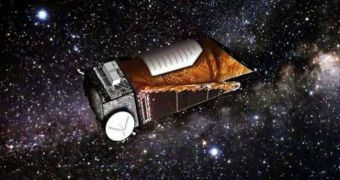A few days ago, NASA announced its latest discoveries in exoplanetary research, which were made with the Kepler space telescope. They said that the instrument, for all its sensitivity, will most likely need a few extra years before it is able to find a second Earth, an exoplanet like our own.
At the recent conference, held on February 2, researchers said that Kepler was able to discover some 1,235 exoplanets in its field of view. Additionally, some of these were Earth-like, and even fewer were found to share more characteristics in common with out planet.
The team behind the investigation announced that it also found 54 exoplanets that were orbiting in the habitable zone of their parent stars. This is the distance where the amount of heat the star provides is perfect to allow for the existence of liquid water on that planet.
Despite the large number of space objects Kepler discovered, the probability that one of them is a close Earth analogue is very remote. Still, it should be kept in mind that all these objects were discovered after NASA's planet-hunting telescope carried out observations for only four months.
One reason for this is represented by incompatibilities between the various factors that need to be met in order to make an exoplanet an Earth-analog. For example, all of the objects found in their star's habitable zone are different in terms of shape, size, composition, density and so on.
The current thinking in the international astrobiology community is that the best bet we have of finding alien life is discovering yet another planet that has the same characteristics as our own, Space reports.
“No one is more eager to get to that than the Kepler team.However, that's going to take time,” told reporters yesterday Douglas Hudgins, who is a NASA Headquarters Kepler program scientist.
He said that, of the 1,235 exoplanetary candidates that Kepler proposed, most will most likely be confirmed by subsequent ground observations. Currently, the total count of discovered exoplanets is a little above 500.
“My feeling is, it'll be better than 80 percent” confirmation rate, said the principal science investigator of the Kepler mission, Bill Borucki. He holds an appointment as a space scientist at the NASA Ames Research Center, in Moffett Field, California.
The general consensus among astronomers is that discovering an alien analog – a rocky exoplanet the size of Earth, in its star habitable zone – will take more than four months of observations.
“It'll require at least three years of Kepler data, as well as painstaking observations from some of the world's largest ground-based telescopes, before those types of planets are going to begin to emerge from the data,” Hudgins explained.

 14 DAY TRIAL //
14 DAY TRIAL //